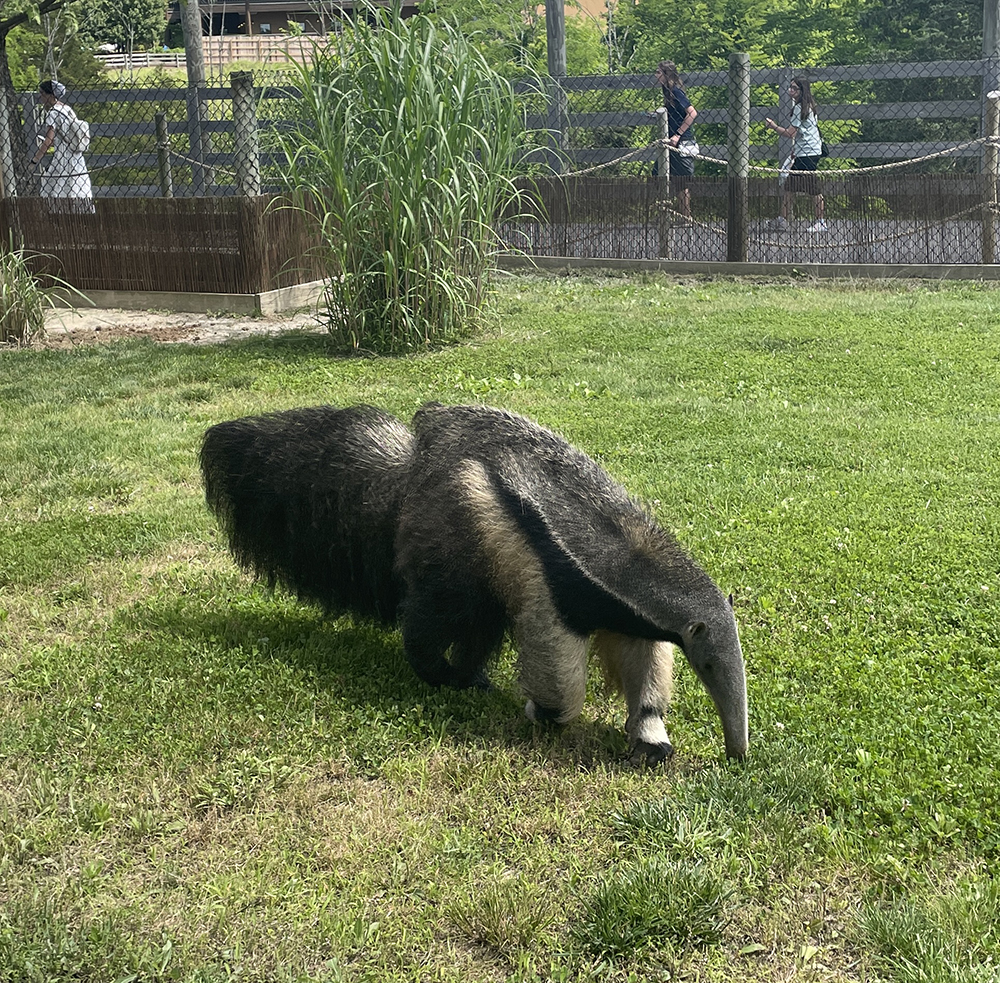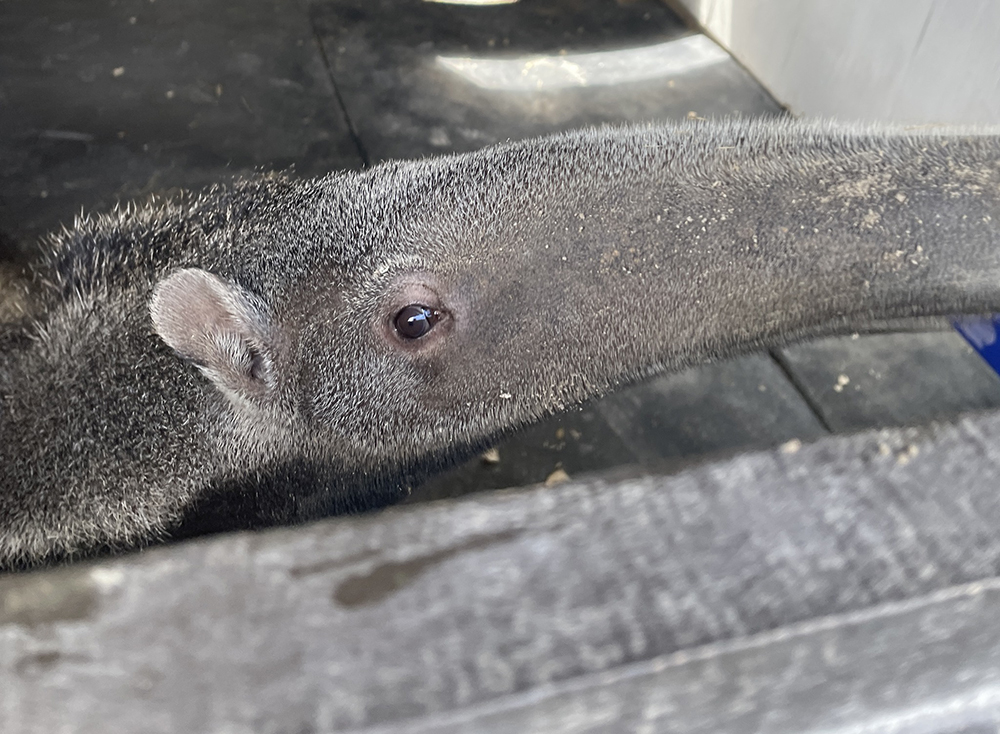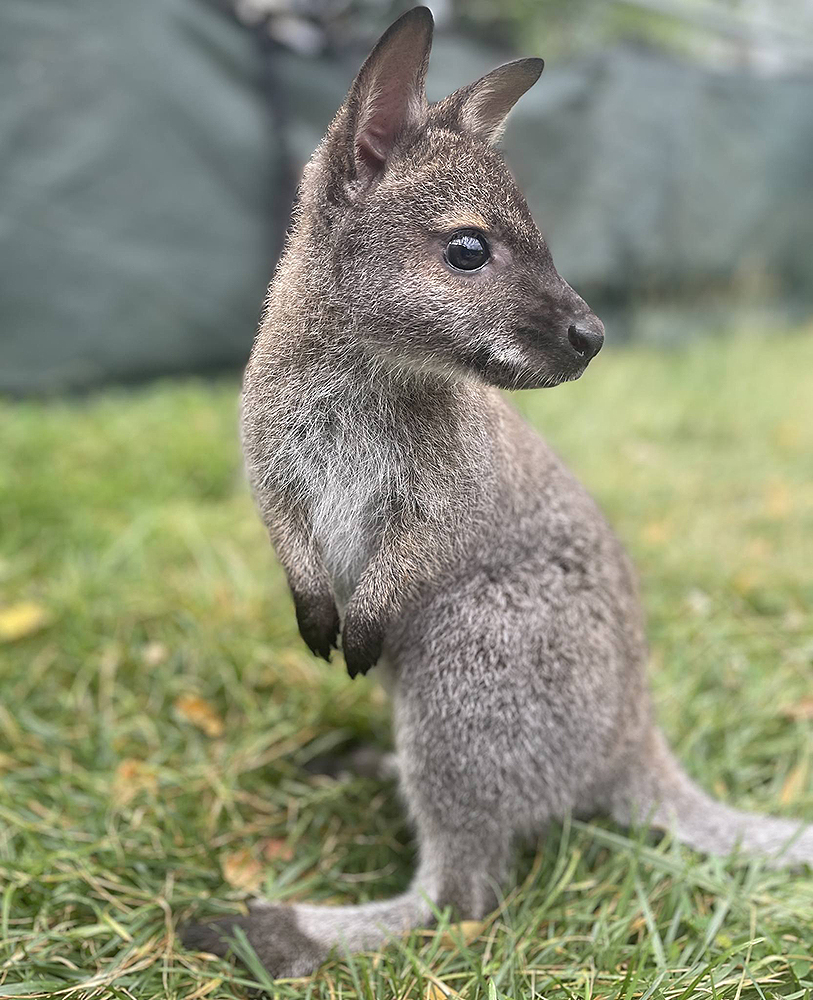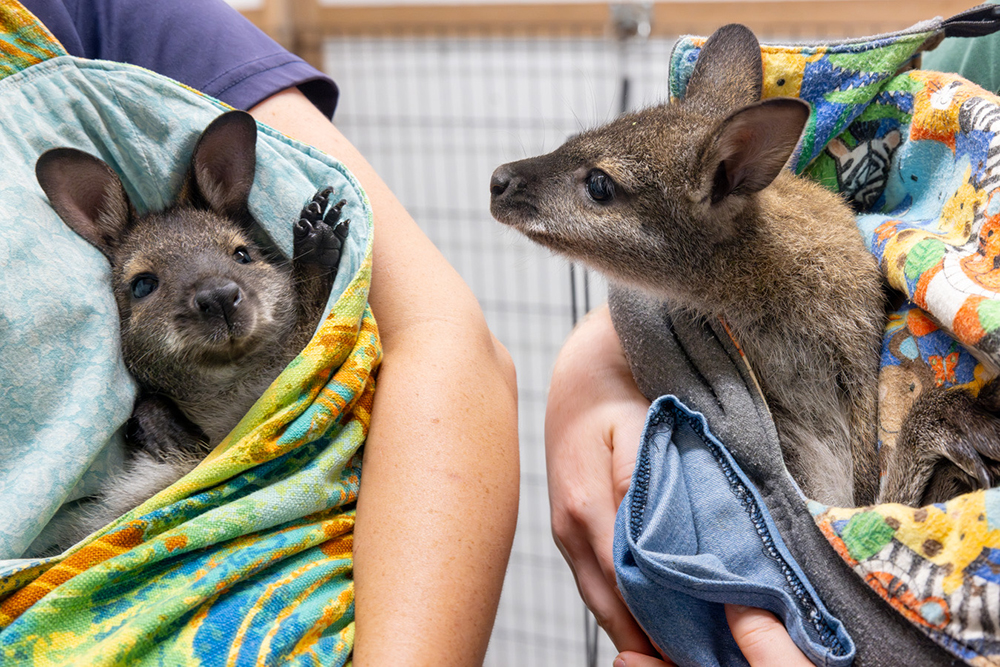New at the Zoo!
by Creation Museum on August 1, 2024At the Creation Museum and Ark Encounter, we love teaching guests about God’s creativity and design through his creatures. Both attractions have always featured zoos filled with a variety of animals that guests love to meet and learn about—and we’ve been hard at work all year expanding the Creation Museum’s Eden Zoo!

In addition to old favorites, a number of new critters are set to call the new Eden Zoo home. The expansion will include a wallaby walkabout where you can meet Bennett’s wallabies and tortoises up close and a new area featuring a variety of South American wildlife.
Meet some of the new additions below!
Anteaters
We are thrilled to add a giant anteater to the Eden Zoo! Meet Quinn, who was named after Cosequin, the #1 veterinarian-recommended joint supplement for animals. Cosequin is produced by Nutramax Laboratories, which has donated a generous amount of funding to help build the new Eden Zoo at the Creation Museum and to improve the Ark Encounter’s Ararat Ridge Zoo.

Giant anteaters are the largest members of the anteater kind, growing up to seven feet long and 140 pounds. Native to Central and South America, they use their two-foot-long spiny tongues to consume over 30,000 insects per day! Their sense of smell is 40 times stronger than a human’s, and they can identify each other by the scent of their saliva.

Quinn currently resides at the Ark Encounter’s Ararat Ridge Zoo but will eventually transfer to the new and improved Eden Zoo.
Bennett’s Wallabies
This species (part of the kangaroo kind) is native to Australia, but Jane comes from an accredited facility in Florida, and Kitty comes from an accredited facility in Ohio. Jane is currently 11 months old, and Kitty is currently 10 months old.
They will eventually join other animals in the Eden Zoo’s new wallaby walkabout, where guests can enter during select times to see them all up close.

Jane
Jane and Kitty were both raised by their mothers. As marsupials, they were only the size of jellybeans when they were born and were blind, deaf, and hairless. God designed them to know how to crawl up into their mothers’ pouches, where they finished developing over the course of about 4–5 months. They don’t start leaving the pouch until about 5–6 months old, and by 8 months old, they’re too big, and their mothers kick them out.

Kitty
That’s when our keepers adopted them and started hand-raising them behind the scenes. Since they’ll be in a walkabout habitat, it’s important that they get used to strangers and all kinds of sights, sounds, and smells.

Hand-raising these wallabies also ensures they are comfortable with any care they need, especially veterinary care. Our zoo staff have dedicated lots of time to caring for them, and they take turns spending the night with them at the zoo to ensure they get their bottles and stay happy and healthy.
During your visit to the Creation Museum, be on the lookout for wallaby sightings as our staff will be walking around with them to meet guests!
King Vulture
Meet Augustus, the king vulture!
Auggie is only 19 months old, so he has his dark, juvenile coloration. In the next few years, his face and neck will become a rainbow of red, orange, yellow, pink, purple, and blue colors. His body will turn white with black and gray markings.

With a wingspan of up to seven feet wide, king vultures are one of the largest New World vultures. As scavengers, they keep their Central and South American habitats clean by eating carrion, which also reduces disease.
Auggie currently resides at the Ararat Ridge Zoo and will eventually transfer to the Eden Zoo.
Aldabra Tortoises
Cashew, Macadamia, Peanut, and Pistachio are our new Aldabra (al-DAH-brah) tortoises. They will eventually join our wallabies, African spurred tortoise (Methuselah), and other to-be-announced species in our new wallaby walkabout.

They are two years old and come to us from the Emerald Coast Zoo in Crestview, Florida, a facility that supports our ministry. Zoo staff believe the tortoises are females, but it is difficult to know for sure until they are bigger and older.
Aldabra tortoises are a vulnerable species native to the Seychelles. They are the second largest tortoise species in the world, with the largest weighing over 670 pounds.
They may also live well over 100 years! An Aldabra tortoise named Jonathan currently holds the record of the oldest known living land animal at 191 years old.
Aldabra tortoises are very social and seem to enjoy the company of other tortoises and people, which makes them an excellent addition to the Eden Zoo!
Our Aldabras currently live behind the scenes, but you may see them out and about with their keepers during your visit.
These are just a handful of the new arrivals for the Eden Zoo, so start planning your trip today and learn more about a variety of exciting creatures once the zoo opens later this year!